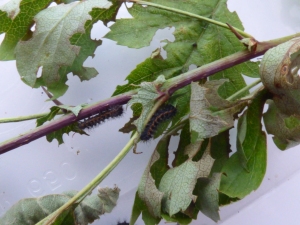Day Seventeen of Megan & Matt Go Wild!
Welcome to our joint-blogging series for the Wildlife Trusts’ 30 Days Wild Challenge – you can read more about the campaign and ourselves in our introduction page.
Matt (in London)
I’ve been in London all day at Speak Up For The Love Of, the largest ever climate lobby of Parliament and MPs.
Thousands of people came to speak to their MPs about climate change and the threat it poses to, among other things, wildlife.
As I stood chatting to RSPB supporters, a smart male blackbird walked around on the grass only a few inches from my feet. It was a beautiful reminder of why many of us were there today.
Better 30 Days Wild posts to follow soon!
Megan (in coastal Dorset)
A busy day at work, as per usual. Not much chance to get outside, even during my lunch break! But that doesn’t stop me from engaging with nature. I spoke to so many visitors at the Chesil Beach Centre today, and on a range of topics – butterflies, dragonflies, bumblebees, little terns, saltmarsh plants, the effect of litter, wildflowers and more!
I didn’t just talk about wildlife in person to people – I also did so via social media. I am co-ordinating the local Twitter account of Dorset Wildlife Trust, and each day we are tweeting a localised idea for #30DaysWild. I.e. random acts of wildness at Chesil Beach or Lorton Meadows.
Day 14: How many different coloured pebbles can you find on #ChesilBeach? Remember not to take them home! #30DaysWild pic.twitter.com/WSHvnIsUwu
— Dorset WildlifeTrust (@DWTWeyPort) June 14, 2015
Additionally today, I was responsible for the Dorset Wildlife Trust evening Facebook post about Chesil. What to write about? Well, in the light of the recent National Bird vote, and with the Little Tern chicks (Sternula albifrons) hatching, I decided that birds would be a good choice. Join the conversation, and let us know what your favourite bird to watch is and why!
CHARM AND CHARISMATell us your favourite bird to watch, and why!Whether it is a robin singing in the garden (our…
Posted by Dorset Wildlife Trust on Wednesday, 17 June 2015















































